Caroline Crachami
The Ballad of Caroline Crachami by Charlotte Hopkins
Using the London Picture Archive for creative projects.
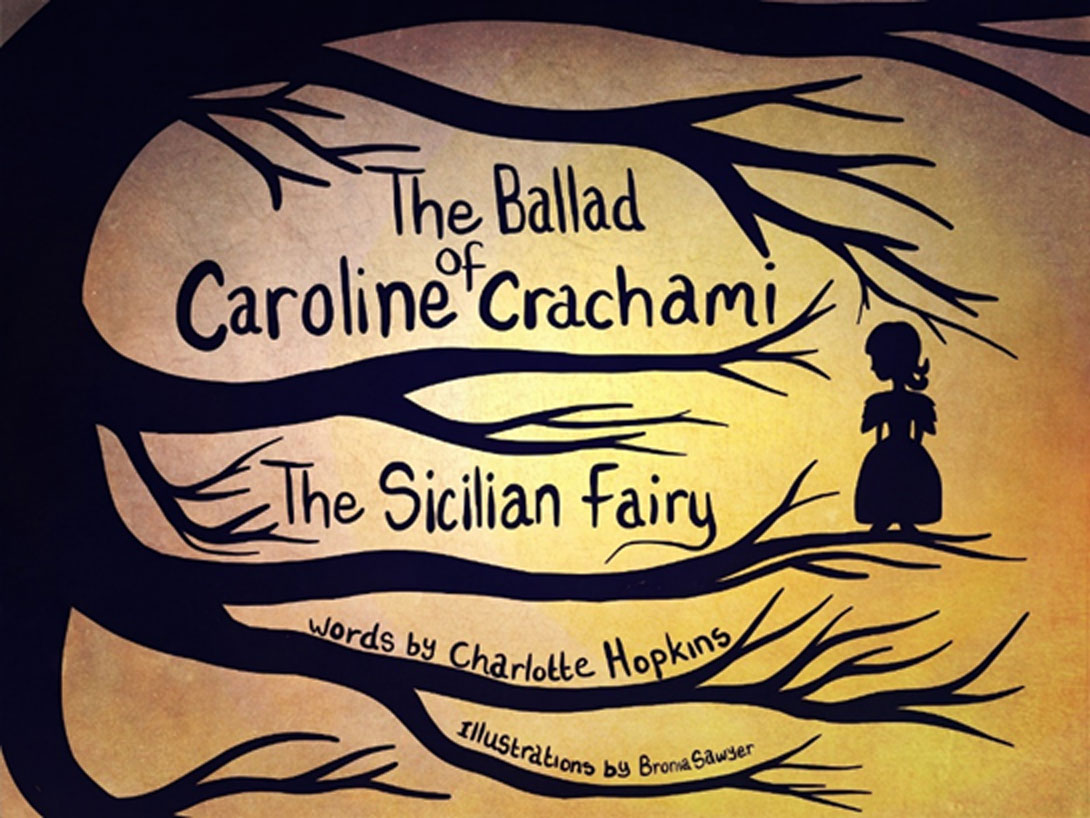
Charlotte Hopkins, an Information Officer at LMA, has produced a book entitled, The Ballad of Caroline Crachami: The Sicilian Fairy. Here she discusses further about the background to this project.
Introducing Caroline Crachami
This was a labour of love that has been many years in progress. I first came across Caroline Crachami (1815-1824) when I was doing an MA in Victorian Studies. We looked at the long nineteenth century which included a closer study of the fascination with curiosities and unusual bodies at that time. Caroline had microcephalic primordial dwarfism, previously known as Seckel or bird-headed syndrome. This is a very rare congenital condition. Growth is restricted and the head is unusually small with features including large eyes, narrow face, and prominent nose. It is thought that she was almost nine years old at death and only 50cm tall. Her birth records have not been found but her father was born in Palermo, Sicily.
I saw her skeleton on display at the Hunterian Museum in Lincoln’s Inn Fields, Holborn, around 2008. This encounter was touching, and her story kept returning to me over the years. About 7 years ago, I began working on a poetic ballad as a tribute to her memory. It has a unique combination of original silhouette drawings by Bronia Sawyer and historical prints from the London Picture Archive.
The aim was to release it in time for the bicentennial of Caroline’s death in 2024. The project also gained the support of a descendant of Caroline’s father. Selected extracts of the ballad are included throughout the text below.
The setting of 1820s London
'This tale gives fair warning to young and old,
For this is a story that is yet to be told…'
Caroline visited London from Dublin in 1824 when King George IV was on the throne. She was exhibited by Dr Michael Gilligan to help pay for her health care, but this ended up being a ghastly deception.
The interest in ‘freak shows’ (as they were formerly referred to) was apparent at sites in London, including Bartholomew Fair and the Egyptian Hall on Piccadilly. Caroline was exhibited at the Naturorama at 22 New Bond Street which was reported in The Times newspaper. It is evident that this appeal in looking at unusual bodies (see the gallery of ‘Unusual Bodies’ on the London Picture Archive) came from a darker place. The Industrial Revolution had sped up the rate of change in the city landscape and people were questioning their relationship to this transformed environment.
London was one of the largest cities in the world during this period in terms of population density (around 1.5 million). Fairburn’s plan from around 1820 reflects a city rapidly expanding into the surrounding open spaces.
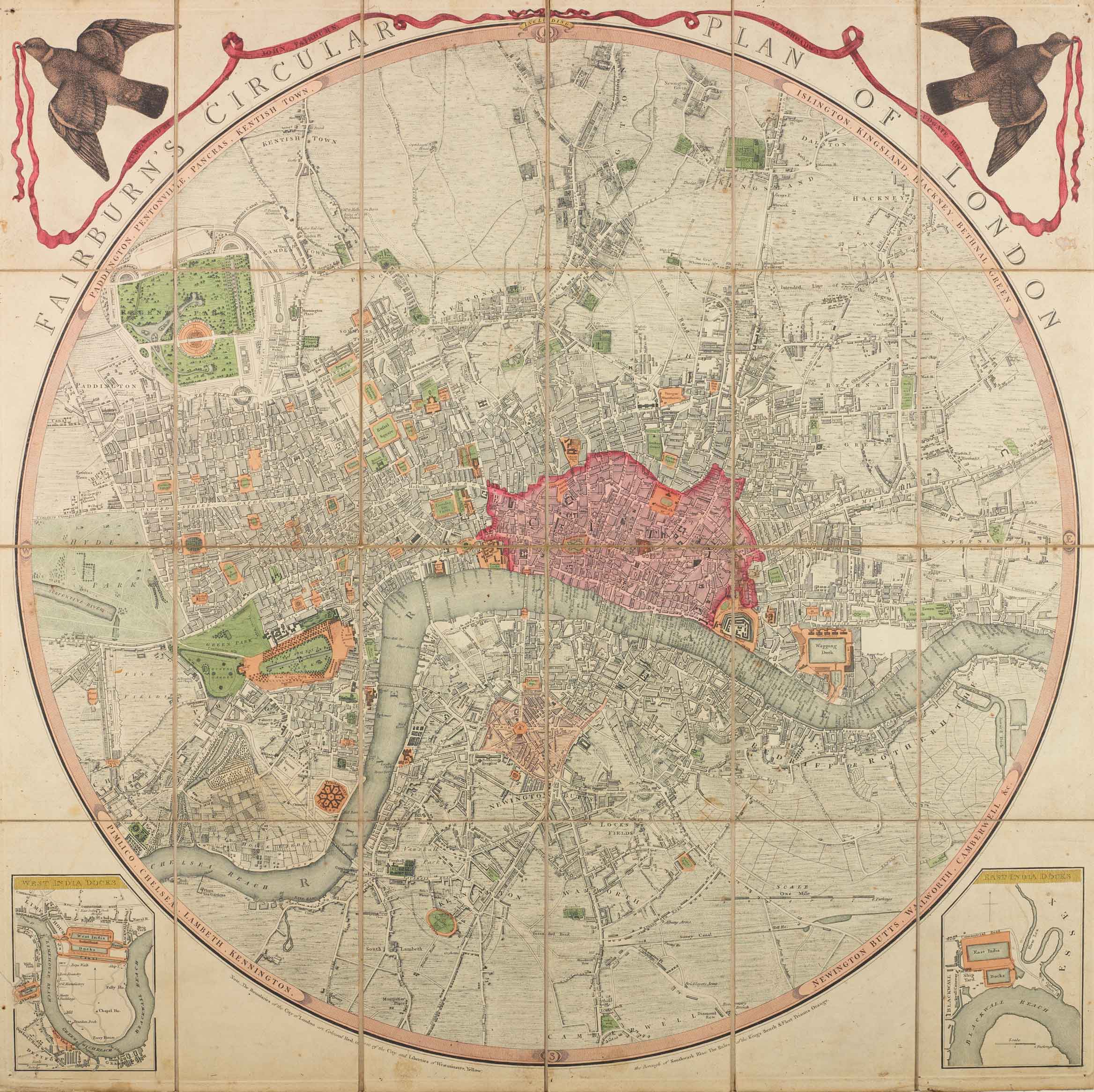
The fairy of your superstition
This need to hold on to something from the past, such as the idea of a character from a fairytale, which Caroline could be in her doll-like proportions, might be said to be a projection of people’s fear of the threat from the modern world in the Regency period. The notion of a ‘fairy-child’ presented before them, may subconsciously have held a promise that the magic of simpler times was not entirely lost.
The Literary Gazette and Journal gave a spellbound report of Caroline’s exhibition in a column of 1824 called Sights of London:
‘...[here] is the fairy of your superstition in actual life.’
It is interesting to note the propagation of mythical taxonomy in a playbill from 1790 at Bartholomew Fair by placing the ‘Irish Giant’ alongside one other such fairy, the ‘Devonshire Fairy’:
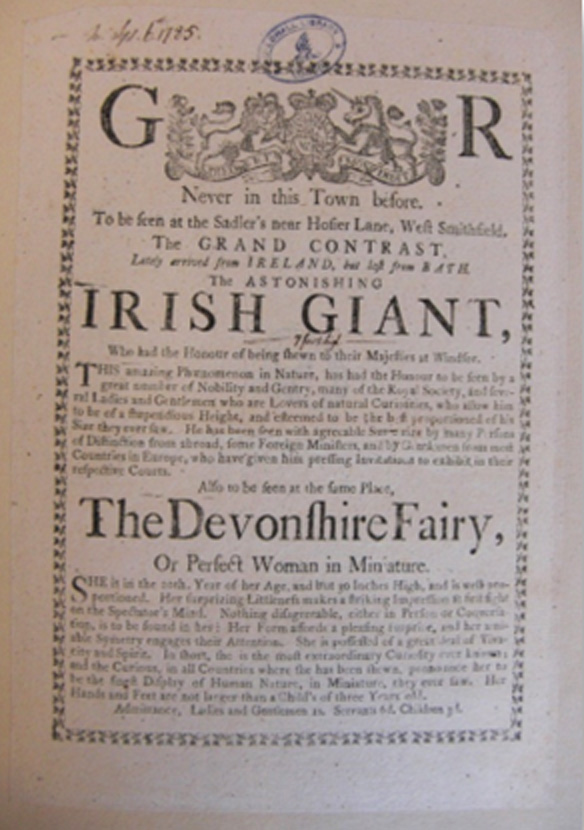
Historical prints sourced from the London Picture Archive
'In 1824 to London went she,
Lodgings in Duke Street and some English tea.
A grand meeting was next on the agenda,
A miniature girl in all her splendour…'
Another important element was telling the story not only with words but through pictures. Bronia Sawyer’s original ghostly silhouettes, I felt, perfectly matched the mood of the piece and created a sense of other worldliness, another time. I wanted to combine these with historical prints to provide the atmospheric context of the era. There are many depictions of London on the London Picture Archive that take you straight to this setting when you filter the dates for the 1820s.
In particular, the interiors of the King’s residence at Carlton House are well represented with all their gilded luxuriant richness. This is a stark contrast to Caroline’s life of being peddled around and shown in places that were most likely uncomfortable, cold, and crowded with gawking spectators.
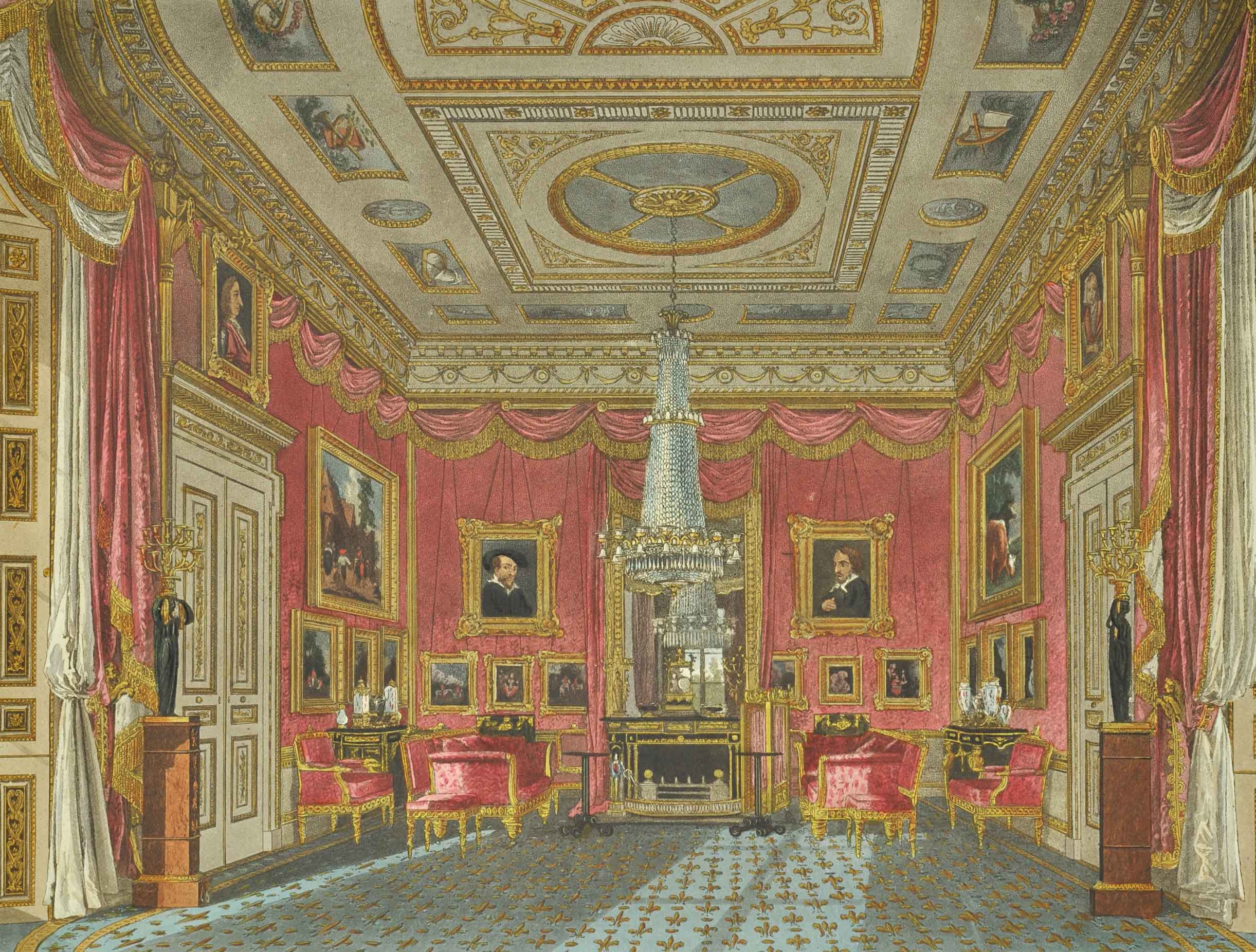
'The majestic stately home of Carlton House,
Dwarfed tiny Caroline as if she were a mouse.
Perched on the state bed and regally dressed
As a small statuette: A Queen in chess.
Paintings in the Rose Satin drawing room
Like giants followed her around with gloom.
The closest she would be to a real Princess
Was to be an ornament in a recess.'
The Hunterian Museum
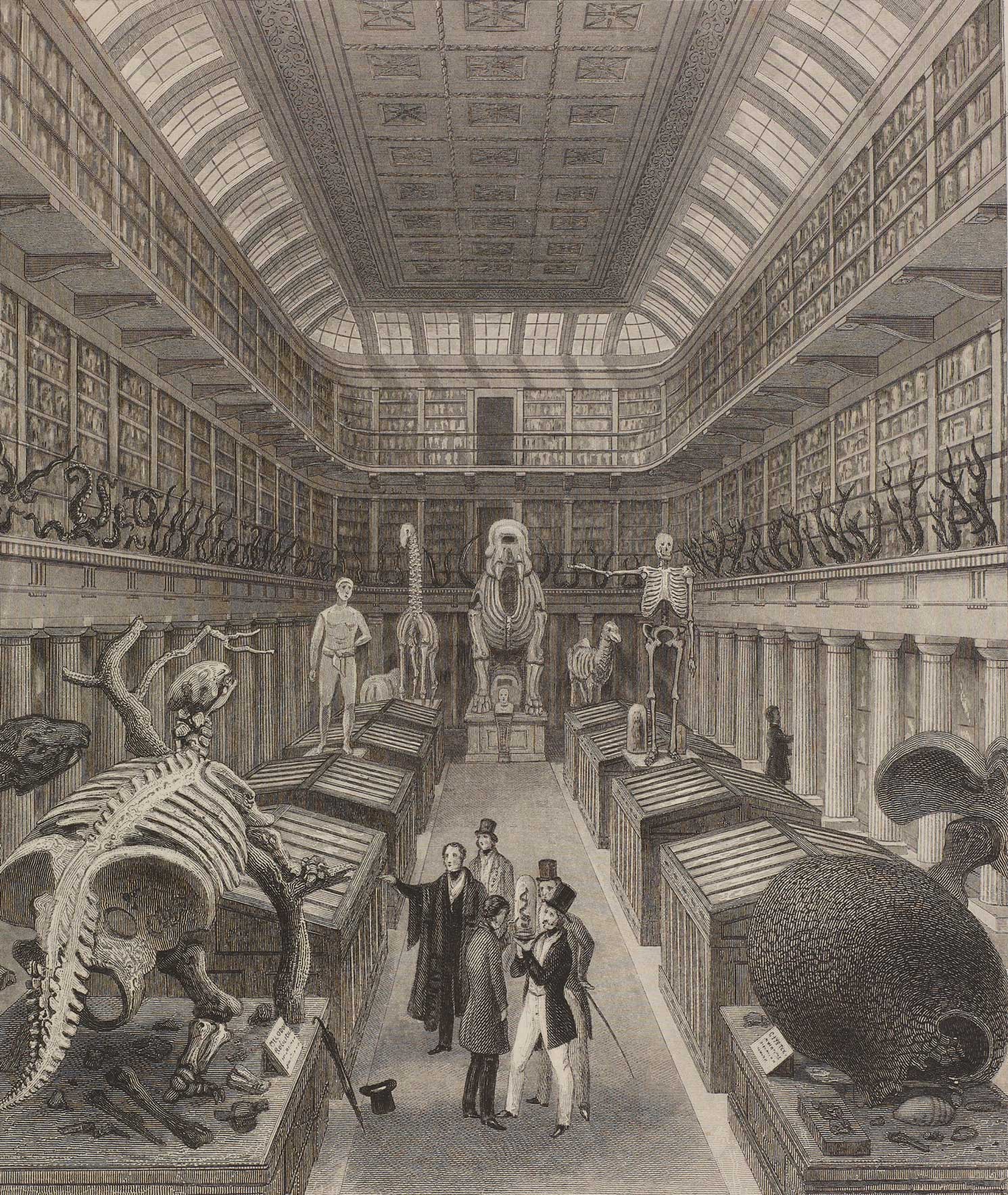
Caroline developed a tubercular cough and died in June 1824. She was subsequently sold and dissected at the Royal College of Surgeons in Lincoln’s Inn Fields without the consent of her family. Her skeleton was then exhibited at the Hunterian Museum for almost two centuries. The Hunterian reopened in 2023 after a six-year period of refurbishment and Caroline is no longer on display, but remains in the collection. This print by Thomas Hosmer Shepherd shows Caroline next to Charles Byrne, the Irish Giant, positioned in the smallest bell jar on the right-side of him. Byrne was somewhere between 2.31m to 2.48m in height contrasting with Caroline who was only around 50cm.
Copies of the book
A book launch was held at LMA on 20 June, 2023 and a recording of the talk is available on YouTube.
This interpretation of a true story is aimed at adults and children over 9. A copy is available in the reference library at LMA P44.09 (CRA), the public library at Shoe Lane (791.35 HOP) and The National Poetry Library, Southbank. There are also plans to release this as an e-book.